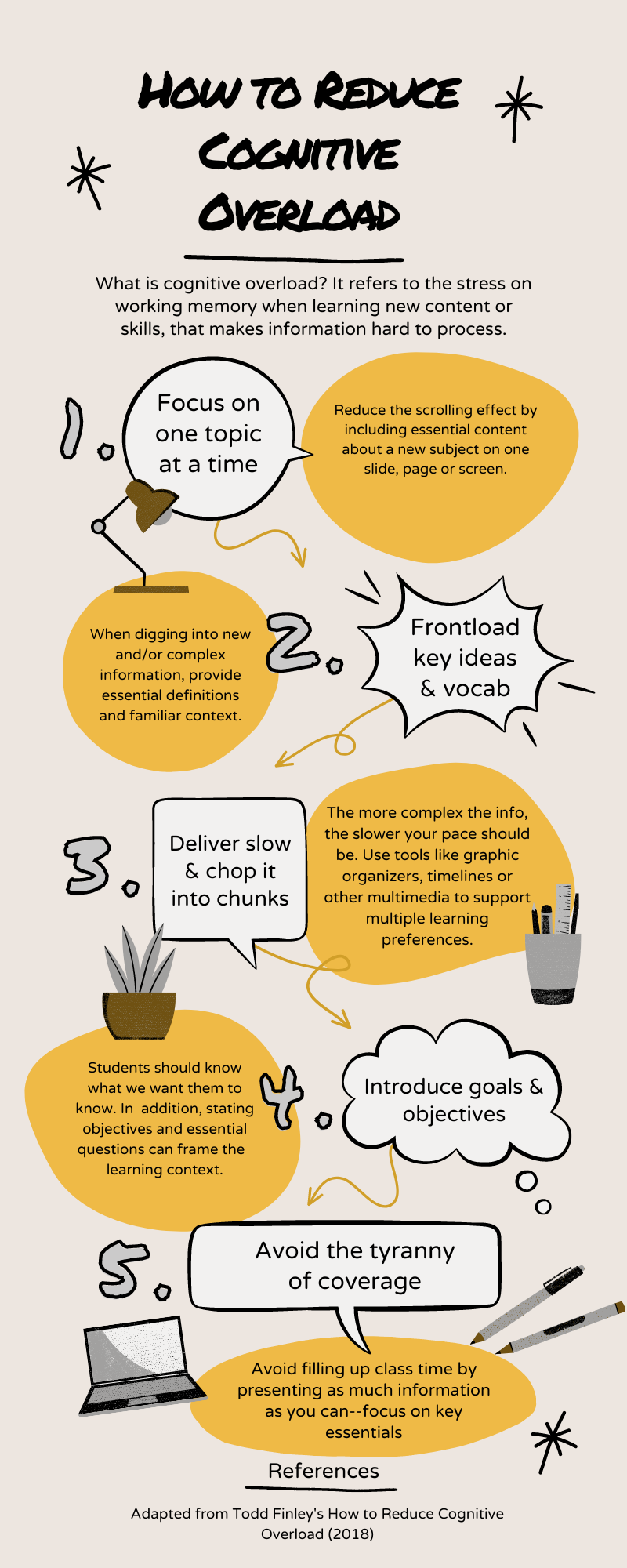UMPI’s Common Syllabi
At the University of Maine at Presque Isle, in service to our mission to provide a student-centered learning experience for all students, campus, and academic leadership (informed by industry standards and student input) have developed a Common Syllabus template and we also support the UMS-system-wide initiate to develop tool access in our Learning Management platform that is dependable and easy-to-access across courses and institutions. These were created to streamline the student navigation process to create a coherent and unified and equitable learning experience.
How cognitive load theory informs our template designs
Cognitive load theory (in short) is a learning theory based on information processing research, which has shown that our short-term memory (an essential stepping stone to long-term memory) is only able to juggle a limited number of elements at one time.
By creating dependable pathways to information, we are able to ‘cut out’ the cognitive processing of ‘looking for’, ‘trying to find’, and ‘where do I’ activities (and the accompanying anxiety of any inability to find needed information), so that students can devote more cognitive function to engaging with learning activities.
For a bit of light reading on Cognitive Load Theory, check out Laurel & Associates great article.
A brief intro to Cognitive Load theory
Building a common pathway while supporting academic autonomy in content design & delivery
We take pride in the talent, resources, and innovation that our faculty bring to Campus. And, we are passionate about helping students connect more fluidly with their professors content! Utilizing the learner-centered syllabus template, allows students to quickly and easily find essential information they need to succeed, across classes and/or disciplines, so they can spend more of their time and brainpower on connecting with content (not looking for where to find essential elements in the syllabus or Brightspace site). Think of the Common syllabus as creating a consistent road map through learning–the destinations along the way (like our courses) will be varied and diverse, but the highways (with predictable signposts) from start to graduation remain consistent.
How this translates within the learning platform
There are a couple of key ways that we practice creating tool access and support consistency in our Brightspace course. The first is by utilizing the Syllabus Page. Within this consistent space, we can post essential contact and course expectation information, as well as post our syllabus for student access. The other way that we honor consistency in the learning experience is with our common NavBar (navigation menu linking to common tool links) within Brightspace courses across disciplines. Creating consistent access to tool links on our NavBar, allows us to devote our content areas to our content and learning pathways–without having devoted entire learning modules to tool access. This also affords students the advantage of knowing where they can access course tools across courses, disciplines–and even institutions!
Supporting academic freedom AND students
Faculty freedom to design course outcomes, assessments, and learning activities is of extreme importance to us. Please be aware that while we advocate for a common structure in our syllabi and online spaces–that we value and support all faculty efforts to create and deliver course content, activities and student experiences in a way that supports their instructional goals, as well as student and program needs.
One of the driving rationales for deploying the Common syllabus and the Brightspace course shell is because we value the integrity and talent of our faculty, and we want students to be able to fully access and interact with course information and important course components.

